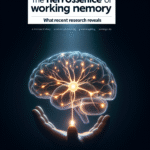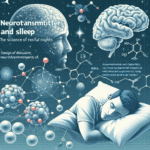
From Diagnosis to Support: Empowering Students with Visual Processing Disorders
Introduction
Imagine a bright, eager student in a classroom, full of potential but silently struggling to keep up. When a child has a visual processing disorder (VPD), the world around them can feel chaotic, leading to frustration, low self-esteem, and diminished academic performance. The journey from diagnosis to support is not merely a pathway but a vital lifeline for many students. Understanding and addressing the needs of students with VPD is essential for educators, parents, and communities alike. This comprehensive guide, From Diagnosis to Support: Empowering Students with Visual Processing Disorders, aims to illuminate the critical steps and strategies necessary to foster success and well-being for these students.
Understanding Visual Processing Disorders
What Are Visual Processing Disorders?
Visual processing disorders impact how the brain interprets visual information, affecting tasks like reading, writing, and organizing visual-spatial information. It’s important to differentiate VPD from vision impairment. While a child with vision impairment might have difficulty seeing clearly, a child with a VPD may have normal eyesight but struggles to make sense of what they see.
Types of Visual Processing Disorders
Classifying visual processing disorders can help educators and clinicians develop the most effective support strategies. Common types include:
- Visual Discrimination: Difficulty distinguishing between different shapes, letters, or objects.
- Visual Memory: Challenges in remembering visual information, such as a sequence of letters or directions.
- Visual-Spatial Skills: Trouble understanding where objects are in relation to oneself or other objects.
- Visual Sequencing: Difficulty in understanding the order of visual information, which can affect reading comprehension.
Awareness and Identification
Early identification of VPD is crucial. Teachers and parents should be alert to signs such as difficulty organizing work, trouble with numbers or letters, and frequent misreading or skipping of lines. Comprehensive assessments by psychologists specializing in learning disabilities can confirm a diagnosis. Creating a supportive environment begins with awareness.
Navigating the Diagnosis Process
Seeking Professional Help
The diagnostic journey for visual processing disorders often starts with a pediatrician or educational psychologist. A multidisciplinary approach is necessary for an accurate diagnosis. Screenings can include:
- Vision Tests: While these may rule out visual impairment, they won’t diagnose VPD.
- Standardized Tests: Assessments such as the Woodcock-Johnson Tests of Cognitive Abilities can be critical in identifying processing deficits.
Case Study: Maria’s Journey
Maria, an elementary school student, struggled with reading. Her teacher observed that she frequently reversed letters and became frustrated during reading tasks. After consulting with a psychologist and undergoing thorough testing—including vision assessments and cognitive evaluations—Maria was diagnosed with a visual discrimination disorder. Armed with this knowledge, her school implemented targeted interventions that transformed her educational experience.
Analysis of Maria’s Case
Maria’s experience highlights a crucial aspect of the diagnostic process: the importance of collaboration between teachers and specialists. By recognizing early signs and seeking comprehensive evaluations, educators can avoid potential fallout in a student’s academic journey.
Strategies for Support in the Classroom
Creating an Inclusive Classroom Environment
Building a supportive educational framework begins in the classroom. Here are actionable strategies:
-
Use Clear Visuals: Utilize charts, graphic organizers, and lay out instructions visually to help students who struggle with VPD.
-
Incorporate Multisensory Learning: Combine auditory, visual, and kinesthetic strategies to engage multiple senses. Techniques may include using colored overlays for reading or tactile activities for math.
- Flexible Seating Arrangements: Ensure that seating allows less distraction and improves focus.
Tools and Technology
Integrating technology can provide significant benefits to students with VPD. Tools include:
-
Reading Software: Programs that read aloud text can help students with reading difficulties.
- Visual Aids: Apps that utilize visual schedules or interactive games are effective in reinforcing concepts.
Case Study: The Transformative Technology in Action
In a middle school, technology was introduced in a pilot program aimed at students with VPD. Students like Jordan, who struggled with reading comprehension, used tablets with specialized apps that enhanced visual learning. The results were remarkable—Jordan began to not only improve academically but also gained confidence and improved social skills.
Analysis of Technology’s Impact
The use of technology in Jordan’s case illustrates the significant role of innovation in supporting students with VPD. The dynamic and interactive nature of apps allowed for personalized learning experiences that traditional methods could not provide.
Collaborating with Parents and Guardians
Building a Network of Support
Collaboration extends beyond the classroom. Engaging parents in understanding VPD and advocating for their child’s needs is indispensable. Strategies include:
- Regular Communication: Conducting weekly check-ins with parents to discuss progress and challenges.
- Resources and Workshops: Offer workshops on VPD’s characteristics and strategies for home support.
Case Study: The Johnson Family
The Johnson family leveraged school resources to educate themselves about VPD after their child was diagnosed. They participated in workshops and learned effective techniques to support their child’s learning at home. The collaboration led to improved academic performance and a stronger family bond.
Analysis of the Johnson Family’s Experience
The Johnsons’ proactive approach underlines the importance of parental involvement. When families understand VPD and contribute to their child’s educational journey, the outcomes are significantly better.
Fostering Self-Advocacy and Confidence
Empowering Students with Skills
Teaching students about their learning styles empowers them to advocate for their needs. Encourage self-advocacy through strategies like:
- Goal Setting: Help students set achievable short-term goals.
- Self-Reflection: Facilitate discussions about what strategies work best for them.
Promoting a Positive Mindset
Encourage a growth mindset among students. Celebrate small victories and help them view challenges as learning opportunities.
Case Study: Emily’s Growth Mindset
Emily, diagnosed with a visual-spatial disorder, learned to communicate her needs effectively in class. Through structured self-advocacy sessions, her confidence soared, leading to improved academic results. By the end of the school year, she effectively articulated her strategies and learned to ask for help when needed.
Analysis of Emily’s Transformation
Emily’s growth illustrates a pivotal aspect of supporting students with VPD: focusing not just on academic achievement but on developing personal skills and fostering resilience.
Conclusion
Navigating the path from diagnosis to support for students with visual processing disorders requires a collective effort from educators, parents, and communities. By understanding VPD, advocating for the necessary resources, and creating inclusive environments, we can empower these students. As we reflect on the journeys of students like Maria, Jordan, and Emily, it’s clear: With the right support, every student can thrive.
FAQs Section
1. What are the common signs of visual processing disorders?
Common signs include difficulties with reading, writing, and organizing visual information, as well as problems with spatial awareness.
2. How are visual processing disorders diagnosed?
Diagnosis involves a multi-faceted approach, including assessments from educational psychologists and vision specialists.
3. What strategies can educators use to support students with visual processing disorders?
Using clear visuals, implementing multisensory learning techniques, and incorporating technology can significantly enhance support efforts.
4. How can parents help children with VPD at home?
Engaging in regular communication with teachers, utilizing provided resources, and maintaining a supportive home environment are vital.
5. Are there specific technologies beneficial for students with VPD?
Yes, reading software and visual aid applications can be incredibly helpful for students struggling with VPD.
6. How can students with VPD develop self-advocacy skills?
Encouraging goal setting, self-reflection, and open communication about their learning needs can empower students to advocate for themselves effectively.
In conclusion, the journey from diagnosis to support for students with visual processing disorders is multifaceted and requires a dedicated approach. By fostering understanding and collaboration, we can create an educational environment that is not only inclusive but also empowering. The key lies in recognizing the strengths within each student and providing them the tools they need to succeed.
















